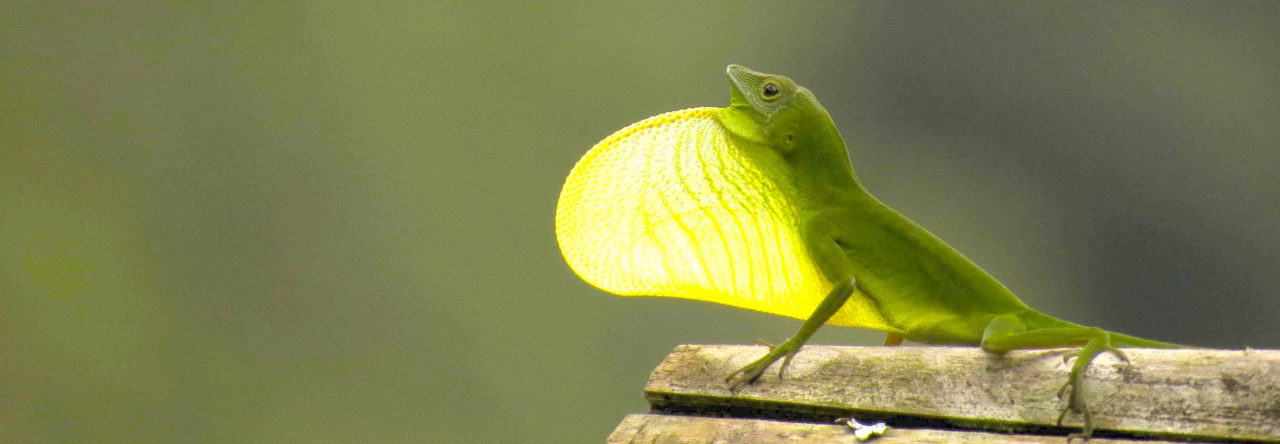Much of my research has been conducted on the herpetofauna of the Turks and Caicos Islands (TCI). Known to a chunk of the lay public in North America as a sweet honeymoon spot, the Turks and Caicos boast a wonderful assemblage of terrestrial reptiles, like these IUCN critically endangered TCI iguanas (Cyclura carinata):

Of course, we on AA prefer the smaller saurians, so I will draw your attention to the TCI anole (A. scriptus scriptus), a member of the Southern Bahamas Anole complex (A. scriptus).

Anolis s. scriptus, Big Ambergris Cay, TCI
Also known as the Silver Cay Anole, A. scriptus can be found across the southern Bahamas banks, including the Inaguas, Samana, Plana Cays, Mayaguana, and the Turks and Caicos Islands. I have previously posted about this understudied species (1,2), but spent a good bit of time observing them on my last research trip. They occur throughout the TCI archipelago, from the dense tropical dry forest of North Caicos, to the pine savannas of Middle Caicos and xeric outposts like the Ambergris Cays. They can also be found on nearly every vegetated rock cay.

Male, Big Ambergris Cay
The males have an attractive yellow wash on the underside, with an orange-yellow dewlap that is really striking in the bright sun. The males display from elevated perches, but are wary when approached by nosy researchers.
The females are more cryptic, both in coloration and in behavior. They often have a light stripe down the back, or occasionally darker crossbars perpendicular to the light stripe.
On Big Ambergris Cay, on the southeastern edge of the Caicos Bank, the anoles especially favor an irrigated area near a decorative plant nursery. They are voracious, taking down large prey like this cicada (Ollanata caicosensis) on the right. Hopefully this voraciousness extends to interspecific interactions, as the “Festive” anole (A. sagrei) has now firmly invaded at least one island on the Caicos Bank (1; more on this in a future post).
Phylogenetically, Anolis scriptus is nested firmly within the radiation of Puerto Rican Anoles (most recently). Most closely related to a trunk-ground clade containing A. cristatellus, A. desechensis, and A. ernestwilliamsi, the TCI Anole exhibits a curious distribution, although they really do resemble A. cristatellus. Much of the terrestrial herpetofauna of the TCI is likely derived from Hispaniola (See TOC on this post), so what did A. scriptus do to get to the TCI? Our recent research on the A. cristatellus clade suggests that A. scriptus most likely dispersed from Puerto Rico around the start of the Pliocene. This could have been accomplished completely over-water, as currents and hurricanes push flotsam in a northwesterly direction from Puerto Rico. Alternatively, the species could have island-hopped on the formerly emergent Silver, Mouchoir, and Navidad banks, now a famous calving ground for the Humpback Whale.
Although I have not visited, the Crooked-Acklins Bank is a curious intersection of Bahamian and southern Bahamian herpetofauna, where the range of the southern A. scriptus (nearby Plana Cays) meets the range of the northern A. sagrei (Crooked Island). Furthermore, the bank is the northern limit of the Southern Bahamas Boa (Chilabothrus chrysogaster), which is replaced just a few kilometers northwest on the Great Bahama Bank by C. strigilatus. Finally, the handsome endemic A. brunneus (1,2,3) occurs there.
















